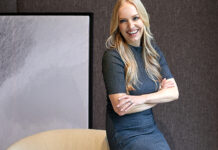
Much like a well-tailored suit or an exquisite dress, interior design is about more than just the basics—it’s about the details that elevate a room from functional to fabulous. In fashion, it’s the trims, textures, and finishing touches that transform a simple garment into something memorable. The same principles apply to interior design: the right accessories, artwork, textiles, and finishing details can create a curated, welcoming home that feels as polished and thoughtful as a designer wardrobe.

1. The Power of Accessories: Adding Personality
In fashion, accessories are the elements that allow an outfit to stand out—think of a beautifully crafted belt, an elegant watch, or a statement necklace. In interior design, accessories function similarly, adding depth, character, and personality to a space. The right accessories can tie a room together, injecting life and warmth into the space.
Consider adding sculptural vases, unique books, decorative trays, or bold throw pillows. Much like an accessory in a fashion ensemble, these elements are not just functional but are used to express the mood or theme of the room. Layering accessories with different textures and colours—metallics, glass, ceramics, or fabrics—can add dimension to your space, making it feel thoughtfully designed rather than bare or too “matchy.”
Just as a jewelry piece can add a pop of color or a sense of luxury to an outfit, accessories in a room—whether it’s an eye-catching lamp or a vintage rug—add interest.

2. Artwork: The Statement Piece
In the world of fashion, a bold scarf or unique shoes can transform an outfit. Similarly, in interior design, artwork is often the standout piece that anchors a room. Whether it’s a large painting, an eclectic gallery wall, or a single striking sculpture, artwork adds a personal touch to your space and sets the tone for the entire room.
Choosing the right artwork for your home is akin to selecting a statement piece of clothing: it should reflect your personality, taste, and the ambiance you want to create. A modern abstract painting could lend a sense of sophistication to a minimalist room, while a vintage poster might imbue the space with nostalgia and warmth. The key is not just the artwork itself, but how it interacts with the other elements in the room—the colors, the textures, the scale of the furniture,
3. Fabrics and Textiles: Layering for Comfort and Style
Just as a fabric choice can make or break a garment, textiles in interior design are crucial to setting the tone and mood of a room. Soft furnishings—such as cushions, curtains, and throws—are not just about comfort; they add texture and warmth, making a space feel inviting and dynamic.
Layering fabrics, much like layering clothing, is key to achieving a curated look. Think of it like layering a cozy knit sweater under a tailored blazer. In interiors, layering different textiles adds depth and richness to a room. A velvet cushion on a linen sofa, a woolen throw on a leather armchair, or a silk curtain alongside cotton bedding can create a sense of comfort, luxury, and sophistication.
Textures and fabrics should complement the furniture and architectural features of the room. For instance, pairing a sleek, modern couch with soft, plush textiles such as velvet or boucle creates a balanced contrast of hard and soft, old and new. As with fashion, don’t be afraid to experiment with mixing different textures—just as a tweed jacket might pair unexpectedly well with silk, textiles like linen and leather can work beautifully together in interior design.
4. Lighting: The Finishing Touch
Lighting is another detail that plays a crucial role in interior design, much like the final accessorizing touch in fashion. Just as the right pair of shoes can elevate an outfit, the right lighting can transform a room, making it feel warm, inviting, and well-composed.
Consider using a mix of ambient, task, and accent lighting to create a layered, well-balanced effect. A stylish chandelier or pendant light can serve as a focal point, while floor lamps and table lamps offer functionality and add ambiance. A well-lit space can enhance the textures and colors of your furnishings, making them appear more vivid and inviting.
5. Trims and Finishes: The Subtle Elegance
In fashion, the details often come down to the finishing touches—the stitching, the buttons, the small but important additions that make a garment unique. In interior design, trims and finishes are the subtle elements that tie everything together. These can include the molding around windows and doors, the edges of carpets, or even the hardware on cabinets and doors.
Much like a well-crafted jacket with perfectly stitched seams, trims in a room can add polish and sophistication. Simple details, such as a beautifully designed chair leg or an elegant drawer pull, may seem small but can elevate the overall aesthetic of the room. These finishing details are what make a space feel cohesive
Just as a perfectly tailored suit or a thoughtfully styled outfit elevates an individual’s appearance, the finishing touches in interior design transform a house into a curated, welcoming home. The key is to focus on the layers of accessories, textiles, artwork, lighting, and subtle finishes that not only serve a functional purpose but also reflect your personality and style. These elements—when thoughtfully chosen and layered—bring a space to life, creating a home that feels as well-considered and aesthetically pleasing as a runway-ready ensemble.

______
Designer Nathalia Hara is the co-founder and Principal Designer for One Group Build.
The team provides full-service design and new build construction and renovation, Servicing Toronto, GTA, Florida, and NY onegroupbuild.com @onegroupdesignbuild











